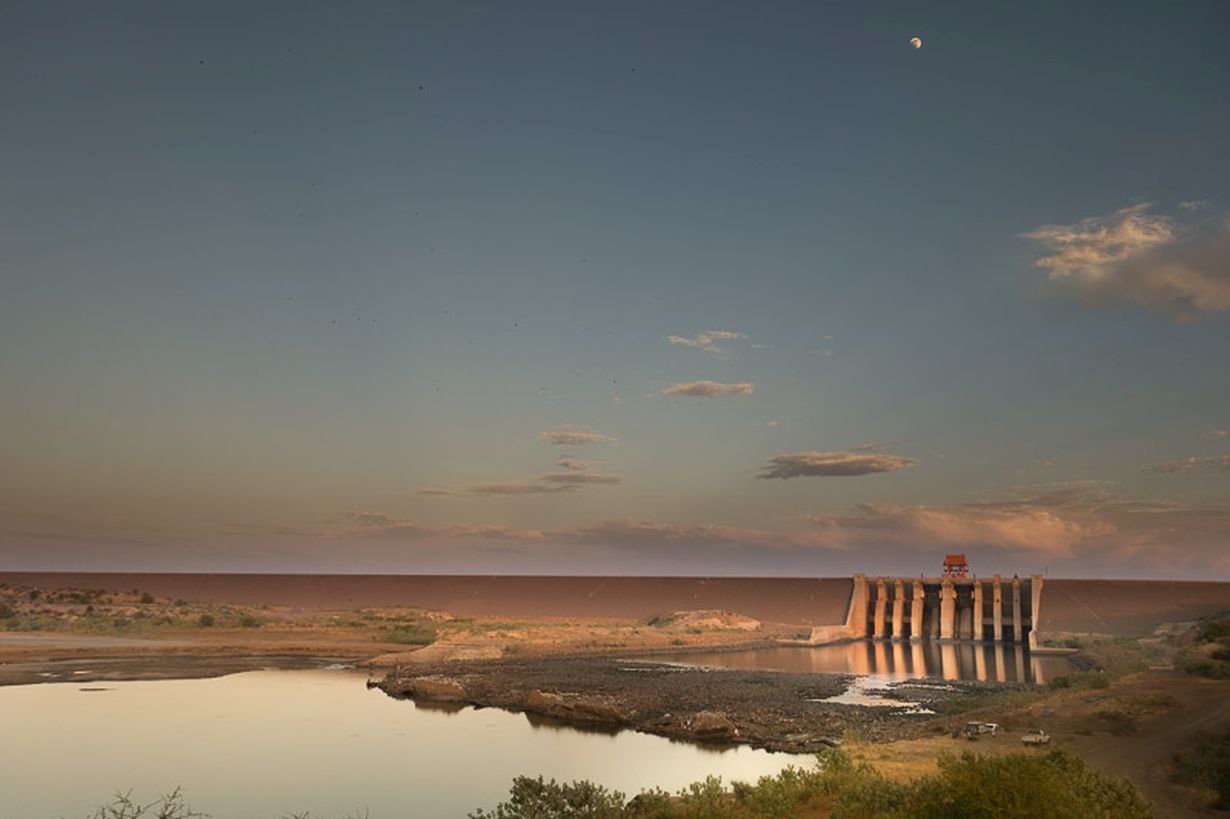How much water will be available in arid and semi-arid regions of the Earth in the future? How can reservoirs and irrigated agriculture be managed? These are the questions covered by the project “Seasonal water resources management in semi-arid regions: Transfer of regionalized global information to practice” (SaWaM) coordinated by Karlsruhe Institute of Technology (KIT). The project funded by the Federal Ministry of Education and Research (BMBF) makes global satellite and model data usable for regional water resources management and seasonal forecast.
The vital resource of water is distributed unevenly across the regions. Water supply is potentially insecure for about 80% of the world’s population. According to estimates of the UN, presumably 1.8 billion people will be affected by absolute water scarcity – less than 500 m³ water per person and year – by 2025. Increasing water scarcity is caused by global population growth and climate change. “This problem is particularly relevant to areas already suffering from water scarcity, i.e. arid and semi-arid regions which cover about 40% of the Earth’s land surface,” Professor Harald Kunstmann, Deputy Head of the Atmospheric Environmental Research Division of KIT’s Institute for Meteorology and Climate Research (IMK-IFU) in Garmisch-Partenkirchen, says. “Hence, it is very important for these regions to precisely know the water resources available.”
Harald Kunstmann coordinates the just started project “Saisonales Wasserressourcen-Management in Trockenregionen: Praxistransfer regionalisierter globaler Informationen” (SaWaM, Seasonal water resources management in semi-arid regions: Transfer of regionalized global information to practice). Seven research institutions focusing on climate, hydrology, and ecosystems research and remote sensing as well as two German companies are involved in the project of three years’ duration.
For months, precipitation in arid and semi-arid regions is smaller than evaporation and pronounced, long dry periods occur. In the mostly underdeveloped countries affected, hardly any observation data are available on the water cycle. Scientists are increasingly forced to rely on satellite or model data. As a rule, these data are very coarsely resolved and subject to large uncertainties. Their use for regional water resources management is limited accordingly.
The SaWaM project is aimed at analyzing the performance of global hydrometeorological data products and optimizing these data with the help of newly developed methods for decision support. A special focus is on the seasonal forecast of the most important water resources parameters for the next six to twelve months. “SaWaM provides important information about the future development of water availability, above all for the management of reservoirs and irrigated agriculture,” project coordinator Harald Kunstmann says.
To ensure practical applicability of the methods developed, the project consortium cooperates closely with local decision-makers, research institutions, and companies in the five semi-arid target regions. Detailed application is envisaged in three development regions, the Iran, Sudan, and Brazil. In another two regions – Ecuador and West Africa – scientists will evaluate general applicability of the methods and selected aspects.
For use in the different regions, the methods have to meet different requirements. In close dialog with local decision-makers, the researchers define region-specific target parameters. These parameters serve as a basis for a prototype online portal, on which the results of the projects will be made available and visualized. Among others, SaWaM will provide information on sediment input into the Upper Atbara dam complex / Sudan in the Nile basin as well as improved hydrometeorological data for sustainable water resources management of Lake Urmia in Iran.
Apart from KIT, the project partners of SaWaM are the University of Potsdam, Stuttgart University, University of Marburg, Helmholtz Center for Environmental Research UFZ, Helmholtz Centre Potsdam – German Research Centre for Geosciences (GFZ), Technical University of Berlin, Lahmeyer International GmbH (Bad Vilbel), and GAF AG (Munich).
The collaborative project “Seasonal water resources management in semi-arid regions: Transfer of regionalized global information to practice” (SaWaM) is funded by the Federal Ministry of Education and Research (BMBF) under the funding program “Globale Ressource Wasser” (GROW, Global resource water).
More about the KIT Climate and Environment Center: http://www.klima-umwelt.kit.edu/english
In close partnership with society, KIT develops solutions for urgent challenges – from climate change, energy transition and sustainable use of natural resources to artificial intelligence, sovereignty and an aging population. As The University in the Helmholtz Association, KIT unites scientific excellence from insight to application-driven research under one roof – and is thus in a unique position to drive this transformation. As a University of Excellence, KIT offers its more than 10,000 employees and 22,800 students outstanding opportunities to shape a sustainable and resilient future. KIT – Science for Impact.

